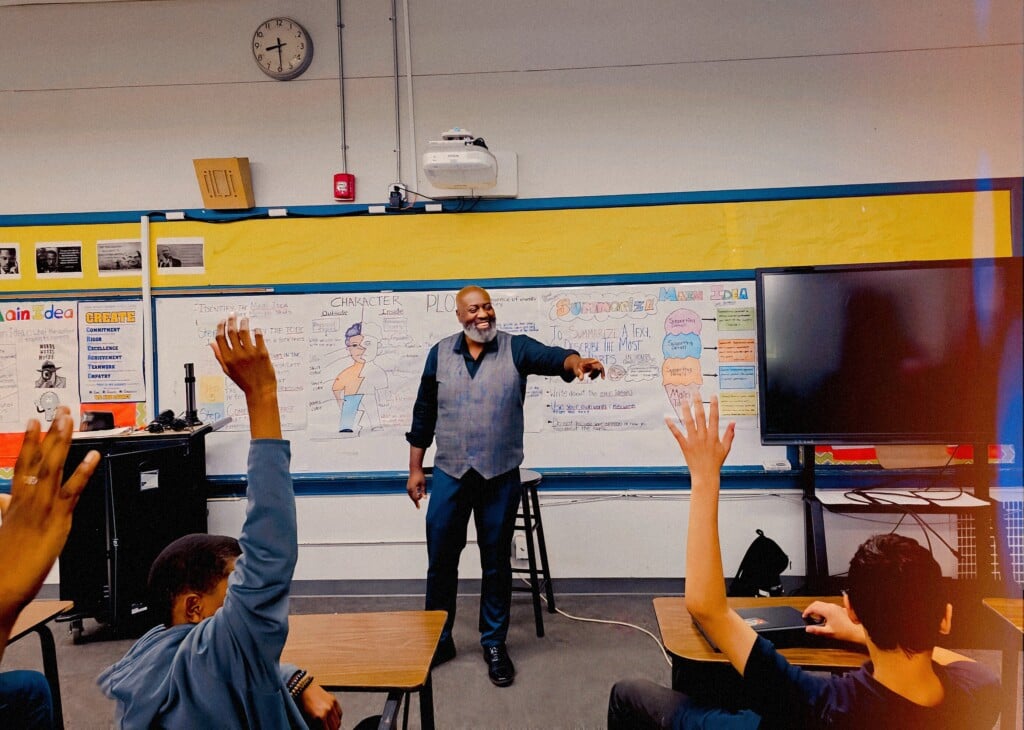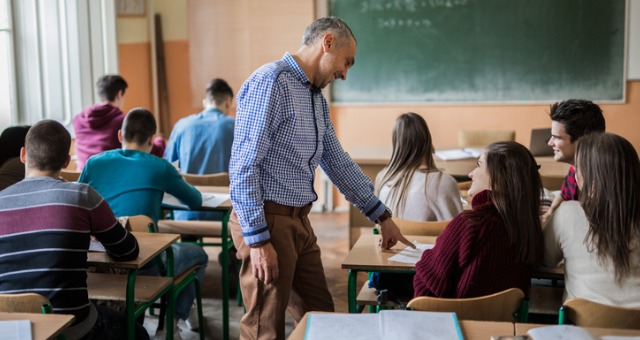Primary Science Tuition Singapore for Building Confidence in Science
Primary Science Tuition Singapore for Building Confidence in Science
Blog Article
Checking Out the Different Training Methods in Key Scientific Research Education And Learning Today
Inquiry-based discovering, hands-on experiments, and the integration of modern technology are redefining exactly how teachers engage young minds. In addition, collective strategies and differentiated direction are being employed to provide to the diverse needs of students, improving both engagement and understanding.
Inquiry-Based Discovering
Inquiry-Based Learning (IBL) is a pedagogical approach that encourages pupils to explore clinical principles through wondering about, examination, and hands-on trial and error. This approach stresses the function of students as active participants in their learning, advertising essential reasoning and analytic abilities. By engaging with real-world inquiries, students become inspired and interested, which boosts their understanding of clinical principles.
In IBL, instructors act as facilitators, leading trainees as they browse their queries instead of supplying details directly. This student-centered technique allows for differentiation, suiting different finding out styles and paces. Pupils establish skills in developing theories, designing experiments, and analyzing data, which are critical for clinical proficiency.
Furthermore, IBL promotes partnership amongst pupils, motivating them to share ideas and findings. This collective inquiry promotes social abilities and a sense of neighborhood within the classroom. In addition, the process of inquiry motivates strength, as students learn to welcome failing as a tipping stone towards understanding.
Hands-On Experiments
Hands-on experiments are an important part of effective scientific research education, complementing the concepts of inquiry-based learning. These experiments allow pupils to involve straight with scientific concepts, fostering a much deeper understanding with experiential knowing. By controling materials and observing results, young students can grasp abstract theories in tangible ways.
Such activities advertise essential reasoning and problem-solving abilities, as pupils hypothesize results, conduct experiments, and analyze outcomes. This process motivates them to ask questions, fine-tune their understanding, and establish a clinical attitude. Moreover, hands-on experiments can be customized to diverse discovering styles, making certain that all pupils have the opportunity to involve meaningfully with the web content.
Additionally, hands-on experiments commonly encourage cooperation among peers, advertising team effort and interaction abilities. Working in teams makes it possible for students to share concepts, review findings, and find out from each other, which improves their overall instructional experience.
Including hands-on experiments right into the key scientific research curriculum not only improves the learning atmosphere yet additionally grows a long-lasting interest in scientific research. By proactively taking part in their education, trainees are a lot more most likely to develop a passion for clinical query that extends past the classroom.

Technology Integration
Integrating technology right into key science education and learning has become progressively essential in promoting trainee engagement and improving learning end results. The usage of electronic devices, such as interactive simulations, digital laboratories, and academic software program, supplies trainees with possibilities to explore scientific principles in innovative methods. These resources promote a deeper understanding of complicated topics by allowing learners to envision and adjust variables that would be impractical in a traditional classroom setup.
Furthermore, innovation combination urges customized learning experiences. Trainees can proceed at their very own rate, reviewing tough principles Source via multimedia sources, which satisfy various understanding styles. This flexibility not just supports individual development but likewise cultivates a sense of autonomy in students.
Furthermore, innovation acts as a bridge to real-world science, connecting students with existing research study and expert contributions. Access to online data sources and clinical journals broadens trainees' point of views on scientific inquiry and cultivates critical believing skills.
Collaborative Understanding
Joint discovering plays an important function in primary science education and learning by fostering team effort and communication abilities among trainees. This technique urges students to work together, share knowledge, and participate in analytic, which improves their understanding of scientific principles. By participating in team activities, trainees learn to express their ideas, pay attention to varied point of views, and bargain services, all of which are necessary abilities in both real-world and academic contexts.

Research study indicates that joint understanding can result in enhanced inspiration and interaction in science topics, as trainees find enjoyment in common visit this site experiences (primary science tuition Singapore). Furthermore, this approach prepares trainees for future collaborative endeavors, equipping them with the abilities needed for efficient teamwork in college and professional settings. Ultimately, accepting collaborative discovering in main scientific research education and learning can significantly improve the knowing experience and advertise a much deeper understanding of clinical questions
Separated Instruction

Differentiated instruction can manifest in different means, such as varying the web content, procedures, or products of knowing. For example, educators might use tiered jobs that give differing levels of complexity, permitting pupils to work at their corresponding preparedness levels. Furthermore, flexible grouping methods can help with collaboration amongst students with different capabilities, cultivating peer understanding.
Evaluation plays a critical duty in this method, as it educates guideline and helps instructors comprehend each trainee's one-of-a-kind demands. Formative evaluations, such as monitorings and quizzes, can lead educators in adjusting their strategies to improve finding out outcomes. primary science tuition Singapore. Eventually, by carrying out differentiated instruction in key scientific research education and learning, teachers can grow a more effective and equitable knowing setting, empowering all pupils to reach their full possibility in understanding clinical phenomena
Final Thought
In summary, the diverse training approaches in primary science education, including inquiry-based knowing, hands-on experiments, technology integration, collaborative discovering, and separated instruction, jointly add to a more effective understanding environment. These techniques promote important reasoning, problem-solving skills, and a much deeper understanding of scientific concepts. By executing these methods, teachers can develop engaging and encouraging class that attend to the diverse needs of pupils, inevitably fostering a long-lasting passion in science and improving academic success.
Inquiry-Based Knowing (IBL) is a pedagogical strategy that encourages trainees to explore scientific ideas via wondering about, examination, and hands-on trial and error.Joint learning plays an important role in key science education and learning by cultivating teamwork and communication abilities amongst pupils.Research study indicates that collaborative learning can lead to boosted inspiration and involvement in scientific research subjects, as trainees locate enjoyment click this link in shared experiences.In fostering a comprehensive knowing atmosphere, distinguished instruction arises as a vital approach to fit the diverse needs and capabilities of trainees in main science education. Eventually, by executing differentiated guideline in key scientific research education and learning, instructors can cultivate a more fair and effective discovering setting, equipping all pupils to reach their complete potential in comprehending clinical sensations.
Report this page